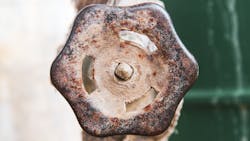EPA issues guidance on identifying lead service lines
Researchers associated with the U.S. Environmental Protection Agency (EPA) have shared several promising approaches for utilities to identify lead service lines in or around properties.
The research paper, “Lead service line identification: A review of strategies and approaches,” was published in AWWA Water Science in June 2021, and EPA later published a review of the paper’s content on its website. In their paper, the researchers share the following approaches: preliminary records review, visual examination, water analyses, and excavation.
Preliminary Records Review
When trying to determine the most recent time that lead service lines and lead connections were allowed, it can often help to review municipal and plumbing codes and construction specifications. Any properties that were developed before these times could still contain lead.
It may help to parse through the historical community records that have been maintained by water utilities and municipalities. These can records can refine the list of possible lead service lines. It can also be useful to interview anyone that might have worked with lead lines as water distribution staff, building inspectors, or plumbers.
Visual Examination
It can often be fruitful to engage residents in conducting a basic visual examinations for private property. Residents can quickly become educated on lead’s properties: a dull, soft, non-magnetic material that turns silver when scratched.
When a pipe is scratched and it turns yellow-orange, it is likely copper. If it turns a shiny silver, it could be either lead or galvanized iron. To differentiate between the two, placing a magnet on the pipe can determine if it is iron (magnetic) or lead (non-magnetic).
Water Analyses
A series of sampling techniques can also determine if drinking water contains significant lead contamination, though not all lead service lines are contaminating water at a given time.
These sampling techniques include sequential, targeted, and flushed sampling.
- Sequential sampling is where a researcher takes multiple water samples from household faucets.
- Targeted service sampling is where a researcher collects the specific water liter contained within a service line.
- Flushed sampling is where a researcher turns on the water, lets it run for some time to remove water that had been standing in the home’s pipes, and then takes a sample.
Excavation
A more involved and more expensive method is excavation, which involves visually inspecting the service line underground. While it can be the most disruptive and expensive way to identify lead service lines, it can also be the most concise and accurate.
EPA has stated that its researchers are also working to refine these approaches and to find lower-cost approaches for detecting lead service lines.
About the Author
Jeremy Wolfe
Jeremy Wolfe is a former Editor for WaterWorld magazine.

